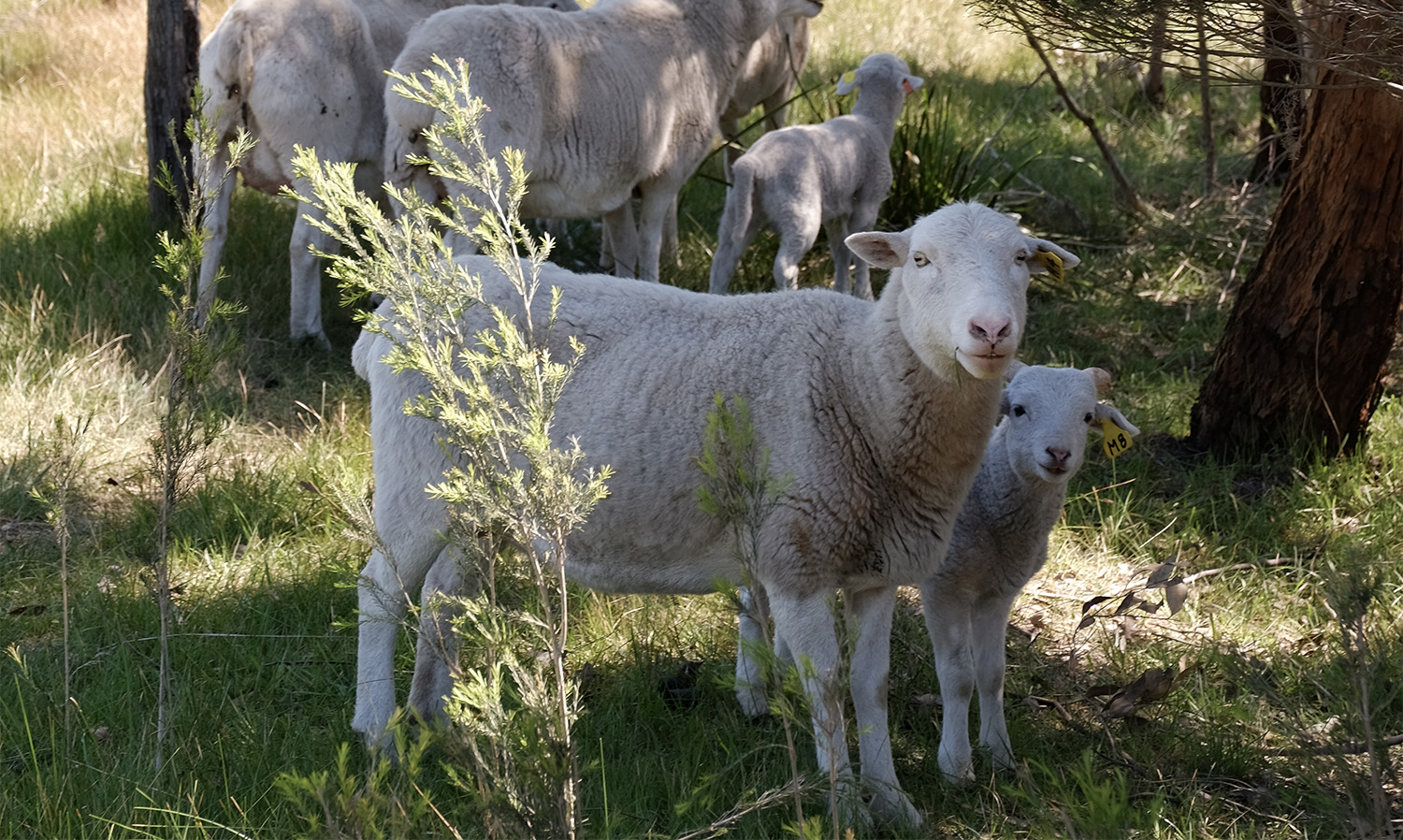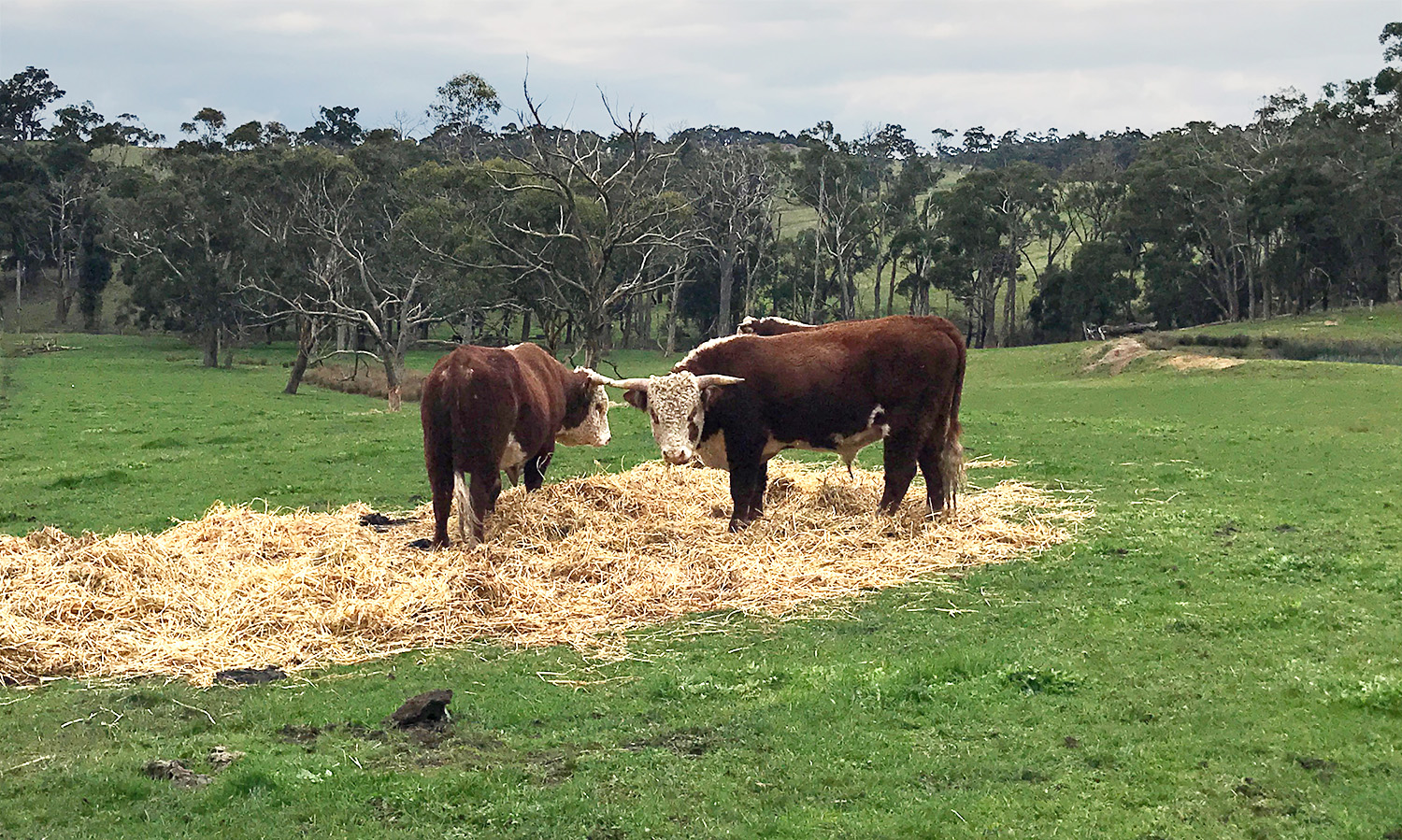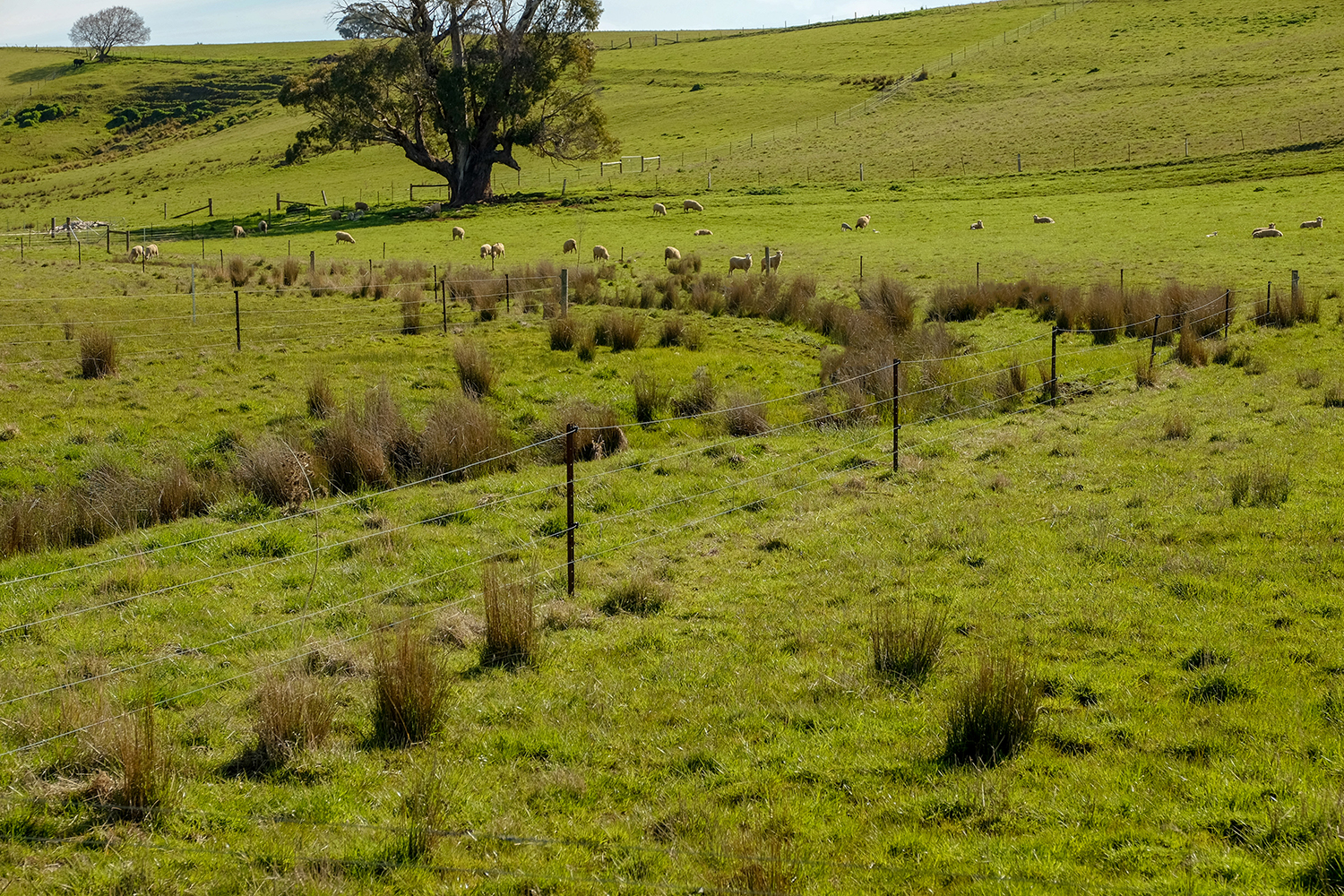To protect the health of your waterway, complete stock exclusion is the preferred course of action. There may be occasions, however, when you need to graze your riparian areas – for example, to control weeds, reduce fuel loads, or as an emergency feed resource.
In these situations, it is important to ensure that grazing the riparian area does not lead to damage. This section contains strategies that will help you refine your grazing management to:
- avoid damage caused by giving stock access to your riparian areas, and
- optimise environmental and productivity outcomes.
Responsible grazing relies on your ability to control the duration, intensity and timing of grazing to avoid damage to vegetation, soil structure and water quality.
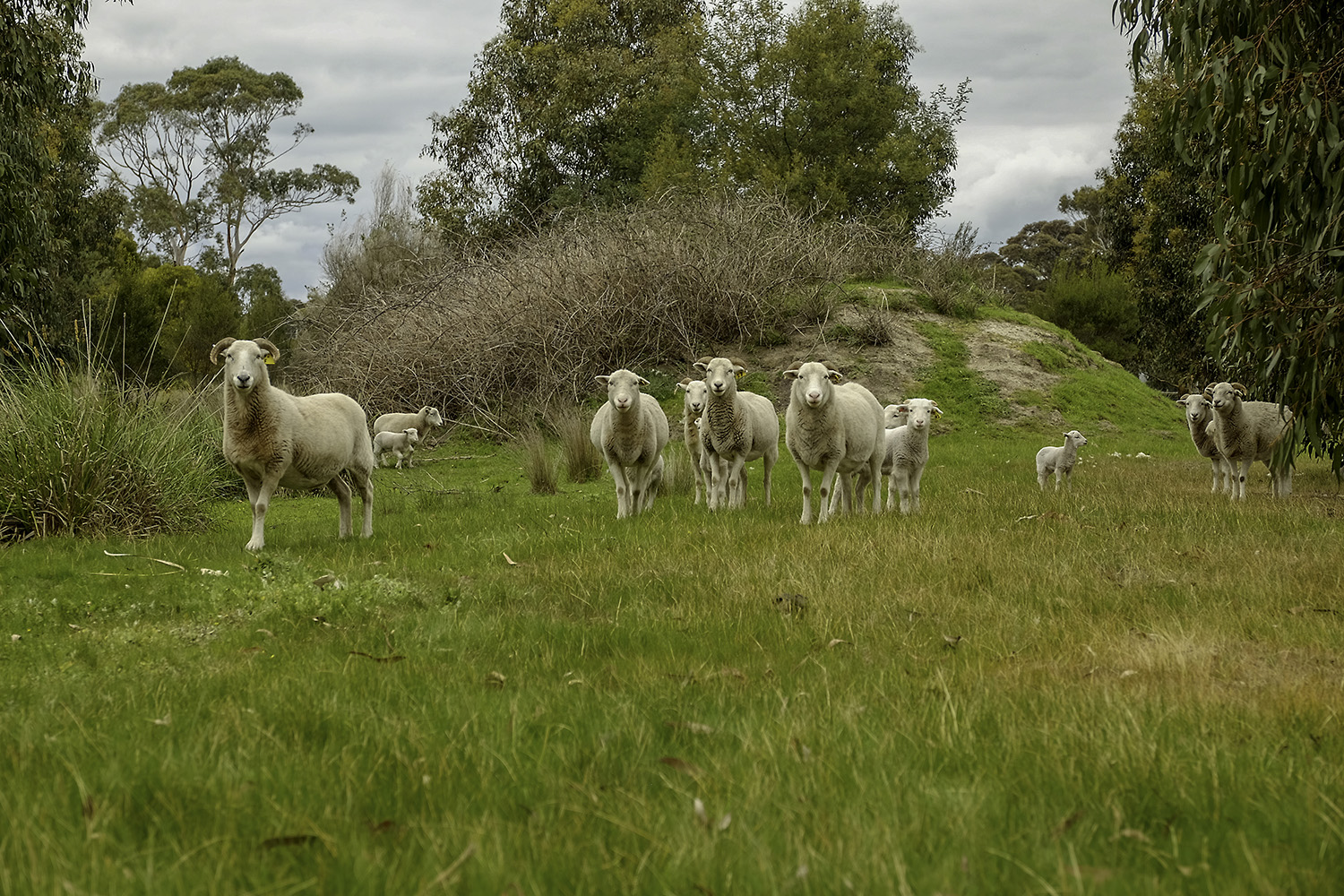
Monitor your riparian area
The fragile nature of the riparian area means that you will need to check it more frequently than other parts of your property for signs of grazing damage.
Assess your riparian area before grazing
Before you give stock access to your riparian land, take careful note of the following condition indicators:
- the amount and type of ground cover.
- the amount of bare earth.
- the condition of trees and shrubs.
- bank stability.
- signs of erosion.
- water quality.
Marking the place where you take your condition report will make it easier for you to pick up any changes in the future. Taking photographs from the same place (marked by a stick or GPS location) is another useful tool for assessing changes to the health of your riparian area over time.
Controlling the timing, duration and intensity of grazing is critical to avoiding damage
You should aim to manage the timing, duration and intensity of grazing to ensure there is no decline in any of your condition indicators. A decline means that damage has already occurred and you must remove stock to avoid further degradation.
Section 9 contains information to help you assess the health of your riparian land. If your assessment indicates that the land is not in good condition, avoid grazing until it has had time to recover.
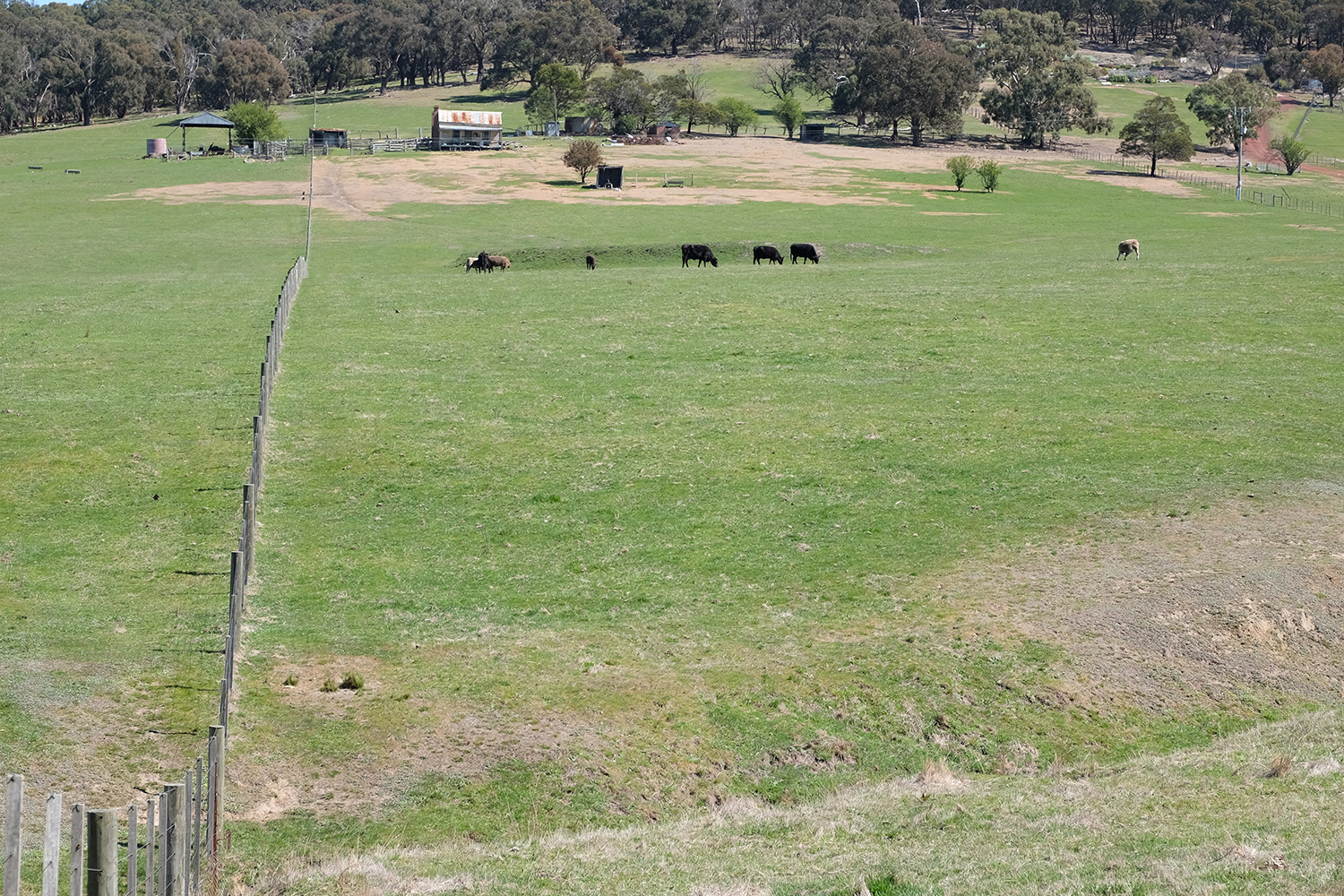
Only graze your riparian land if it is in good condition
A thick cover of protective vegetation, stable ground and banks, and intact trees and shrubs indicate that your riparian land can withstand some grazing pressure.
In contrast, areas of bare earth, heavily grazed trees, erosion and pugging indicate that your riparian land is damaged and needs time to recover before it can be safely grazed.
Do not graze when the soil is too wet, or too dry
When soil moisture levels are high, there is a significant risk of pugging and compaction. Similarly, when the soil is very dry, and vegetation is sparse, you should exclude stock to prevent overgrazing and erosion.
Stock your riparian land conservatively
Conservative stocking rates are critical for responsible riparian management.
If you receive funding to help protect your riparian land, make sure you understand what you can do with that land in the future. Many funding agreements contain conditions about its ongoing management.
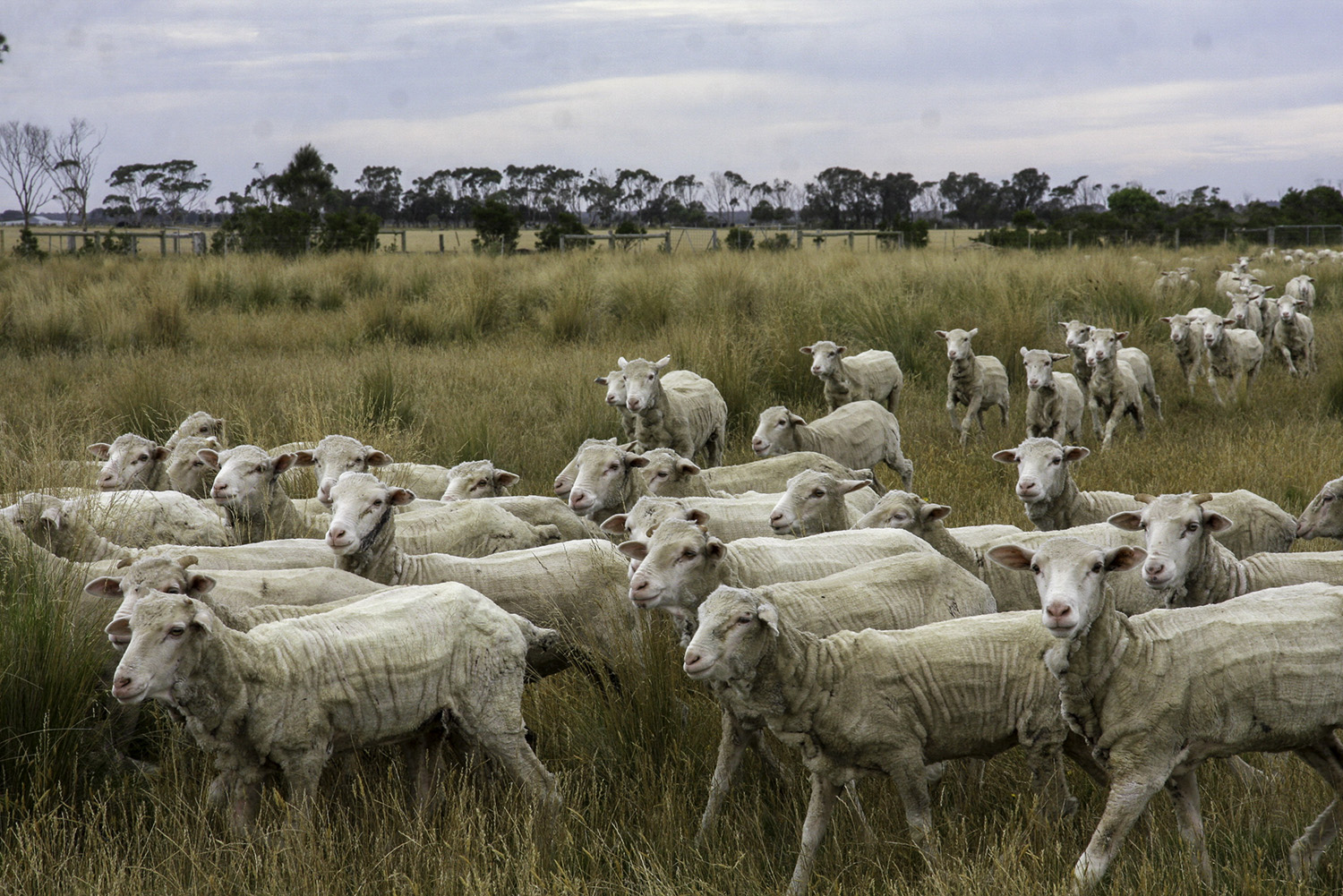
Graze for short periods, then rest your riparian land
Continuous grazing, even at low grazing pressure, is detrimental to riparian areas because it gives the vegetation no time to recover. Native vegetation will eventually die out and be replaced with unpalatable, weedy species, or worse, result in bare ground and erosion.
If you do need to graze your riparian area, the best strategy is to graze for a very short period of time followed by a long period of rest. This practice is followed by the farmers in this Guide who choose to strategically graze their riparian land.
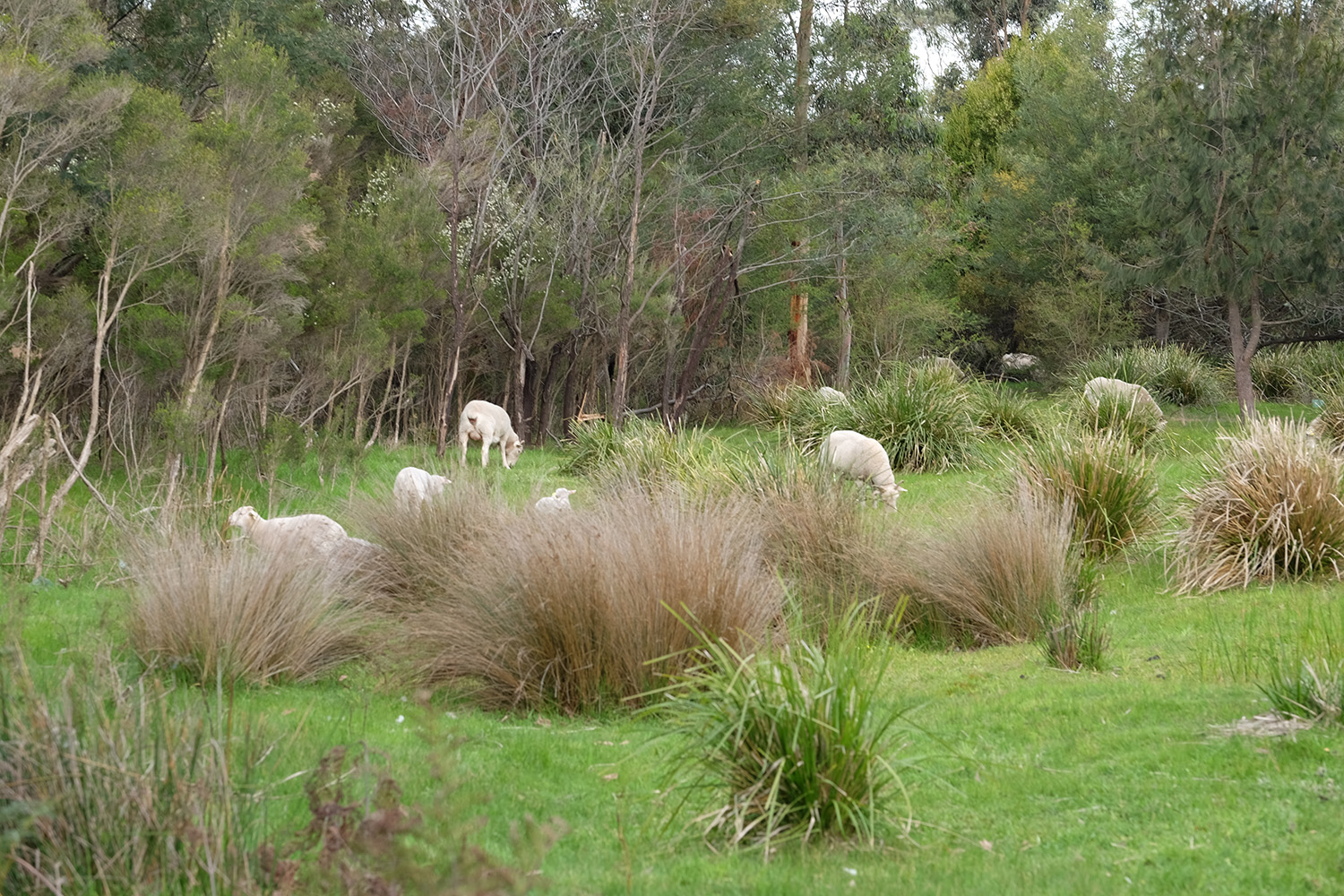
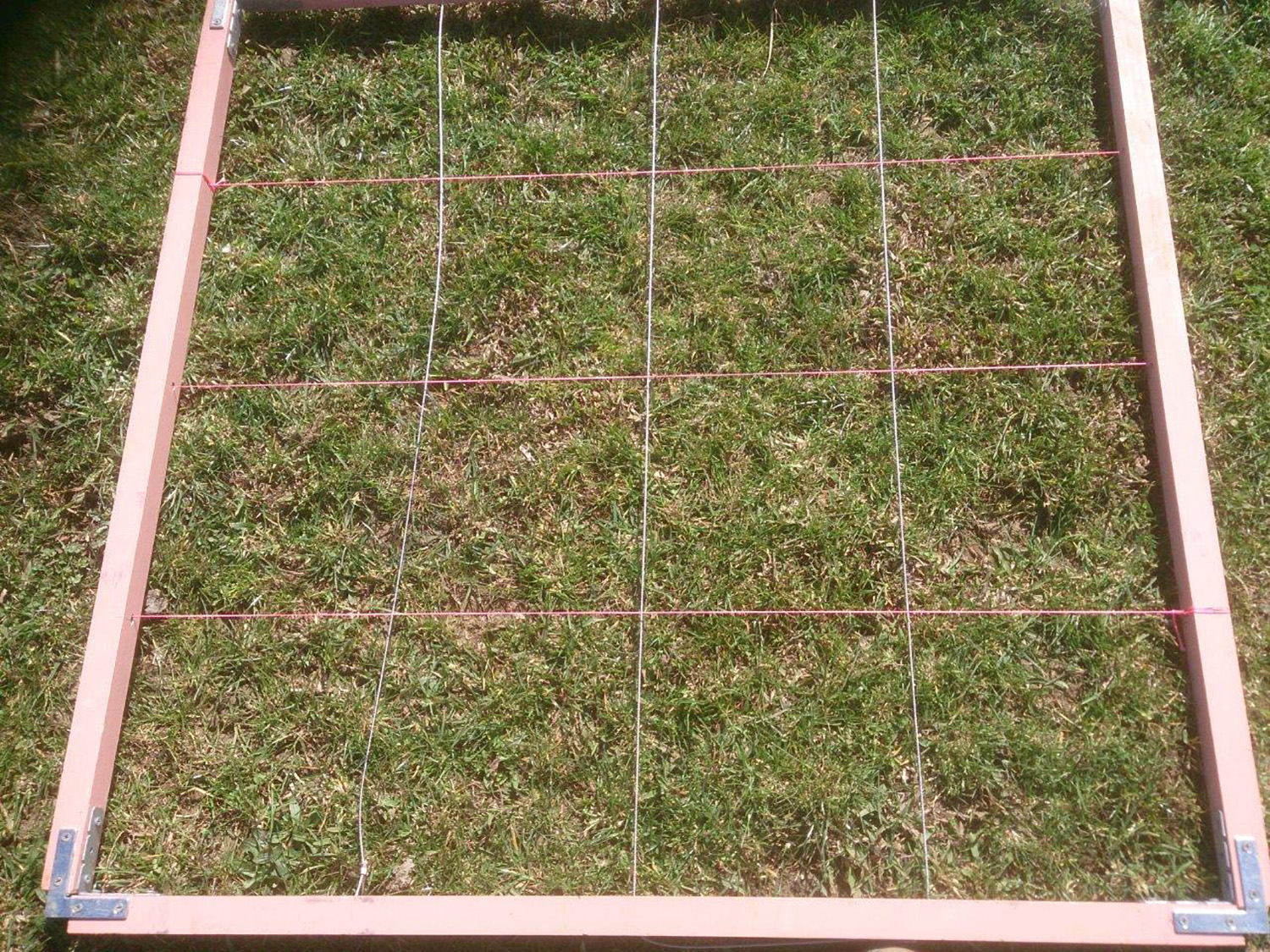
80-90% groundcover.
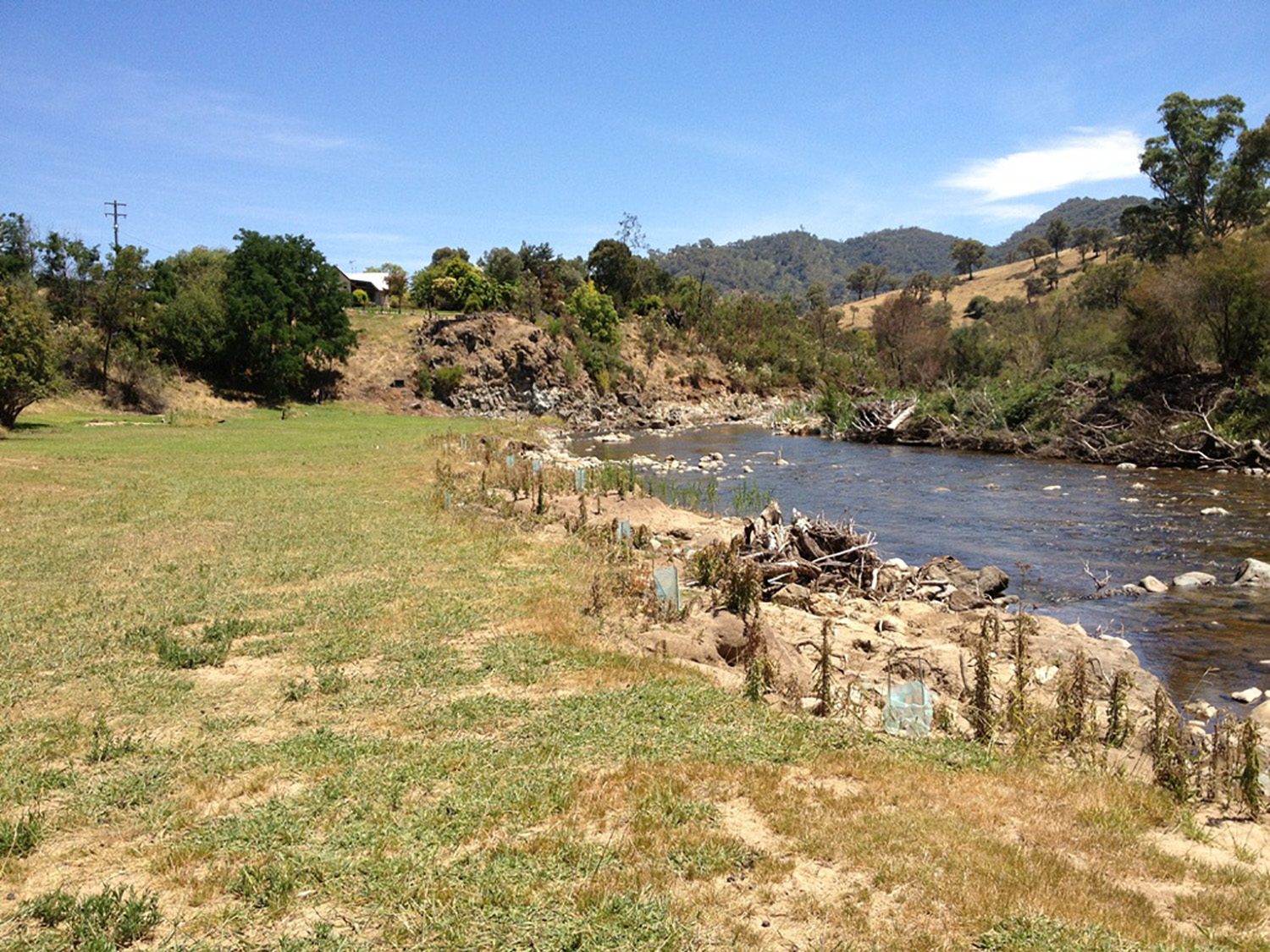
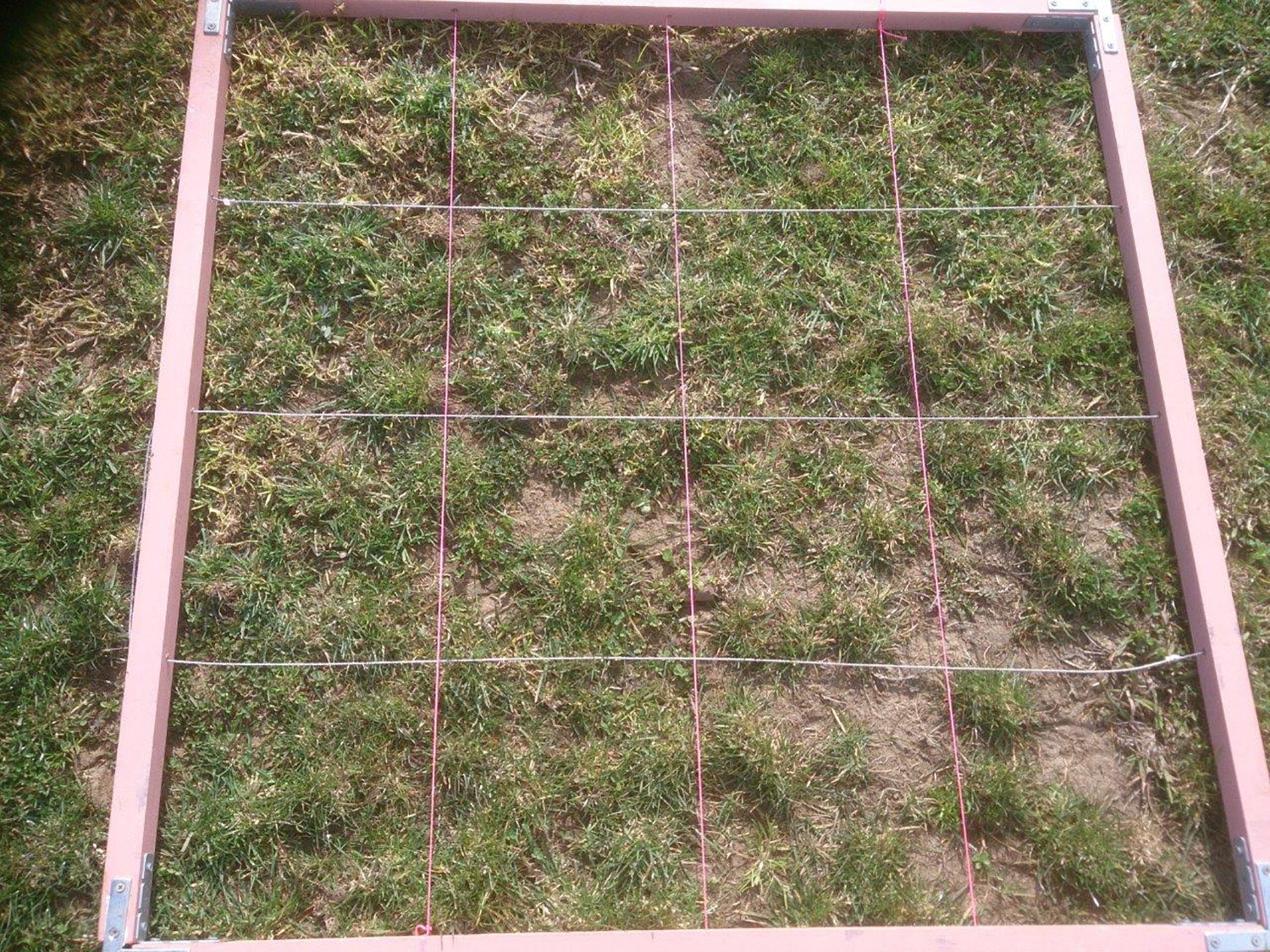
60-70% groundcover.
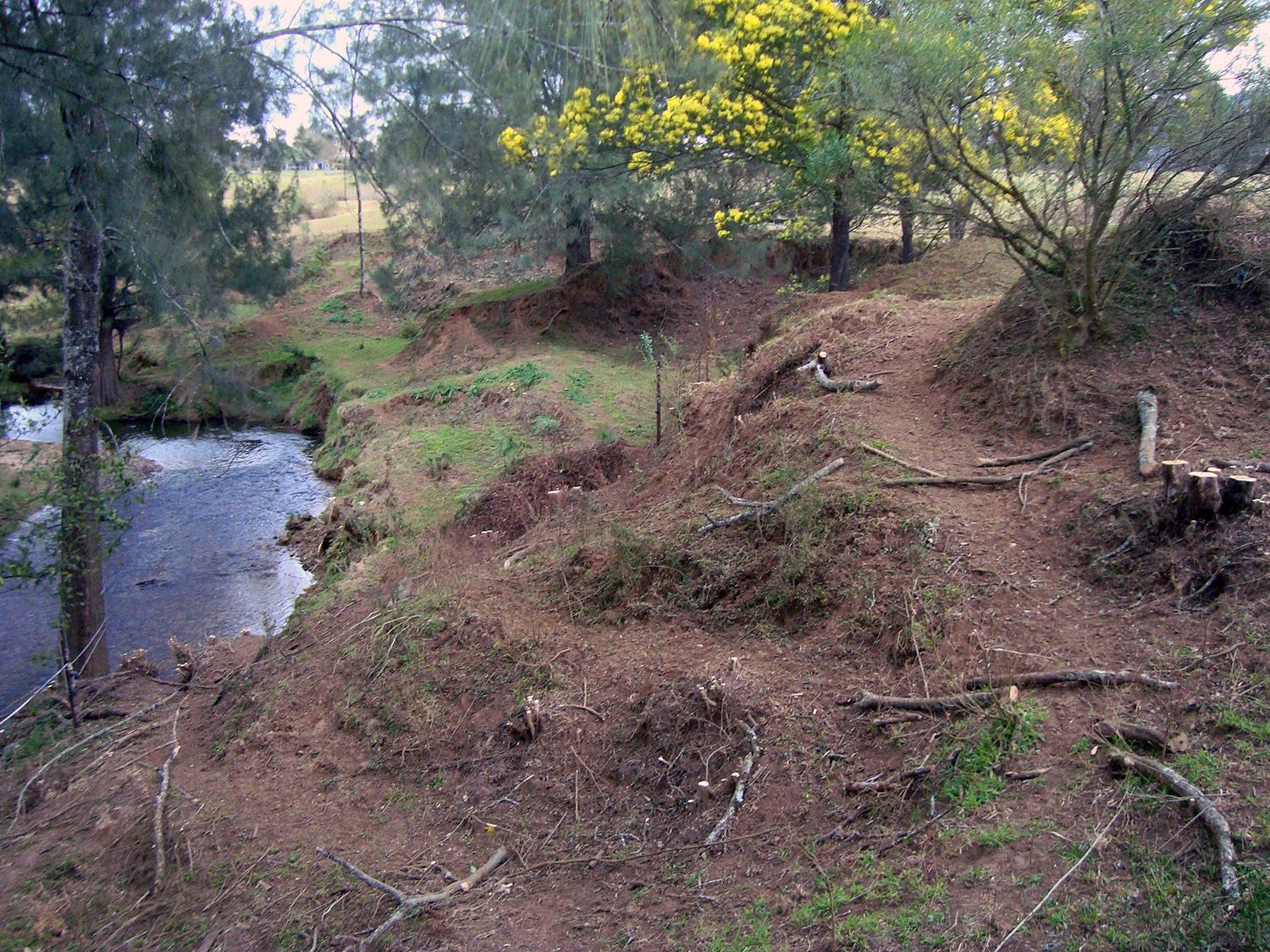
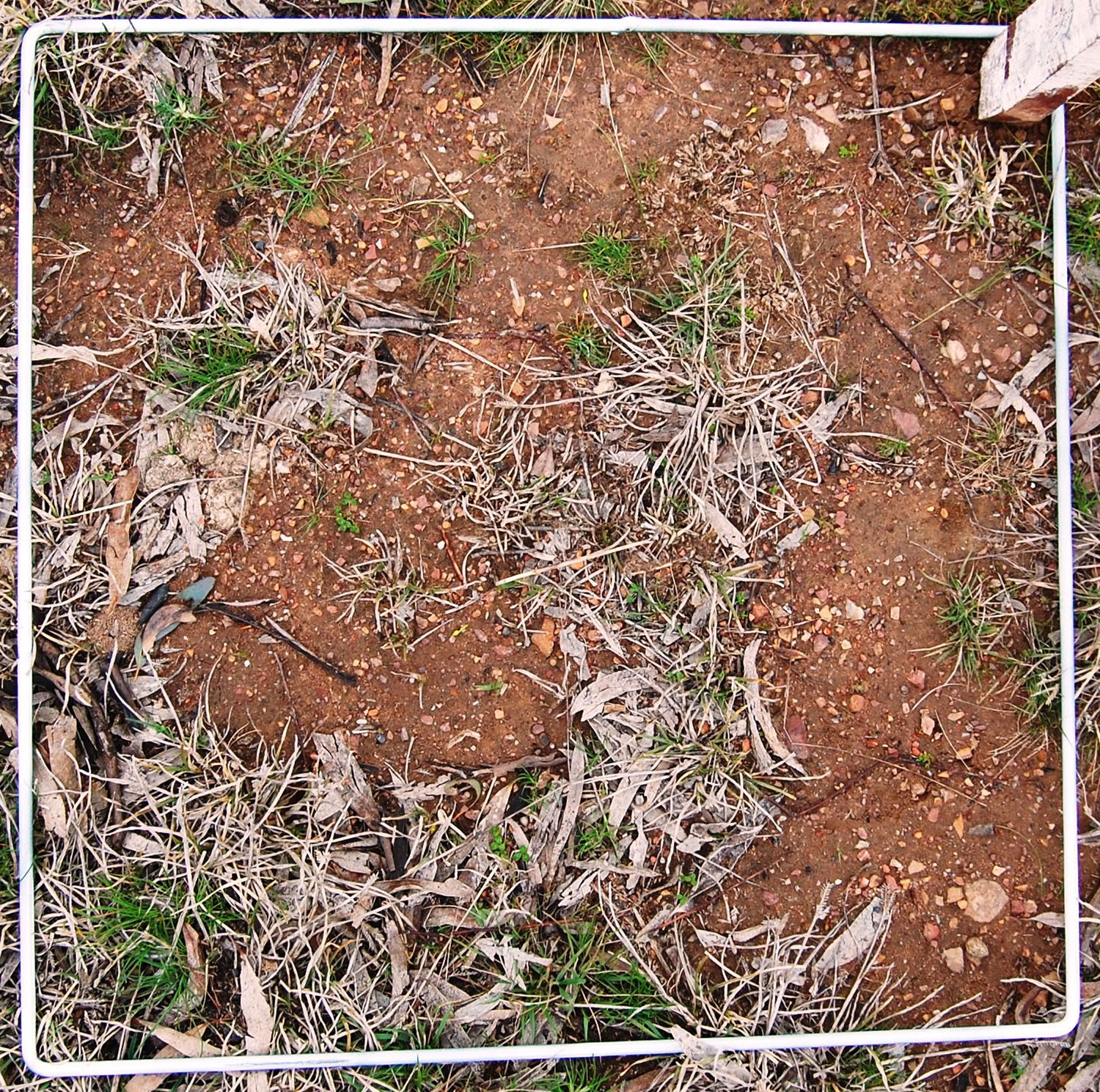
30-40% groundcover.
Maintain at least 80% groundcover at all times
A good rule of thumb is to maintain at least 80% groundcover (top quadrat above) at all times. This will provide adequate vegetative cover to protect your riparian land from the impacts of grazing.
When groundcover falls below 80%, the land is at risk of erosion, particularly if it is on a slope. There is also inadequate vegetation to filter nutrients and sediment before they enter the waterway (middle quadrat).
If there is little or no groundcover (bottom quadrat), erosion and compaction will occur and nutrients and sediment will flow directly into the waterway. Reversing the damage will require total stock exclusion for some time.
You must be able to respond quickly to signs of damage by reducing stock numbers or excluding stock from the area.
Only graze if you are able to control your stock
Fencing and watering systems are the two main methods for controlling grazing pressure around riparian areas. Portable fencing and watering troughs are flexible and efficient options if you do not have permanent infrastructure in place.
You can place mineral licks and feeding troughs away from the riparian zone to encourage stock to move away from these fragile areas.
Never graze immature or lactating stock in riparian areas
Research has shown that the manure of juvenile and lactating stock contain significantly more human-infectious pathogens than that of other stock.
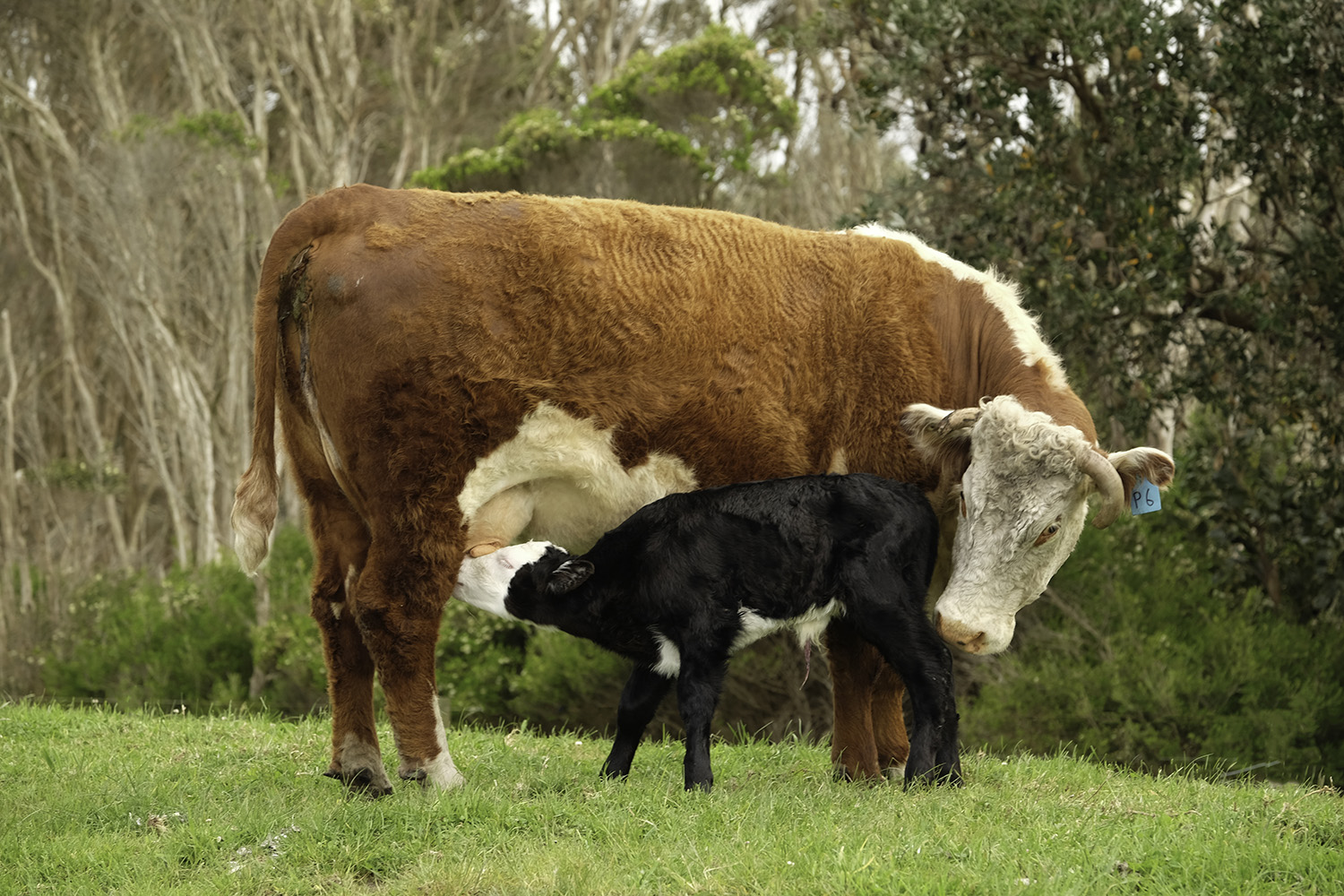
Address your stock’s watering needs before grazing
Establishing off-stream watering points is essential for maintaining clean, healthy water for your stock and people further down the catchment. Portable troughs are a good option if you don’t yet have an off-stream watering system in place.
If you have no option but to let stock drink directly from your waterway, you should take steps to prevent them wading, wallowing and damaging the bed and banks. Section 6 contains information about constructing in-stream watering points that allow stock to access water for drinking, but restrict their ability to wade.
Giardia and Cryptosporidium are waterborne pathogens that cause intestinal illnesses in humans, sometimes leading to death. The manure of juvenile and lactating cattle and sheep contain high levels of both of these pathogens.
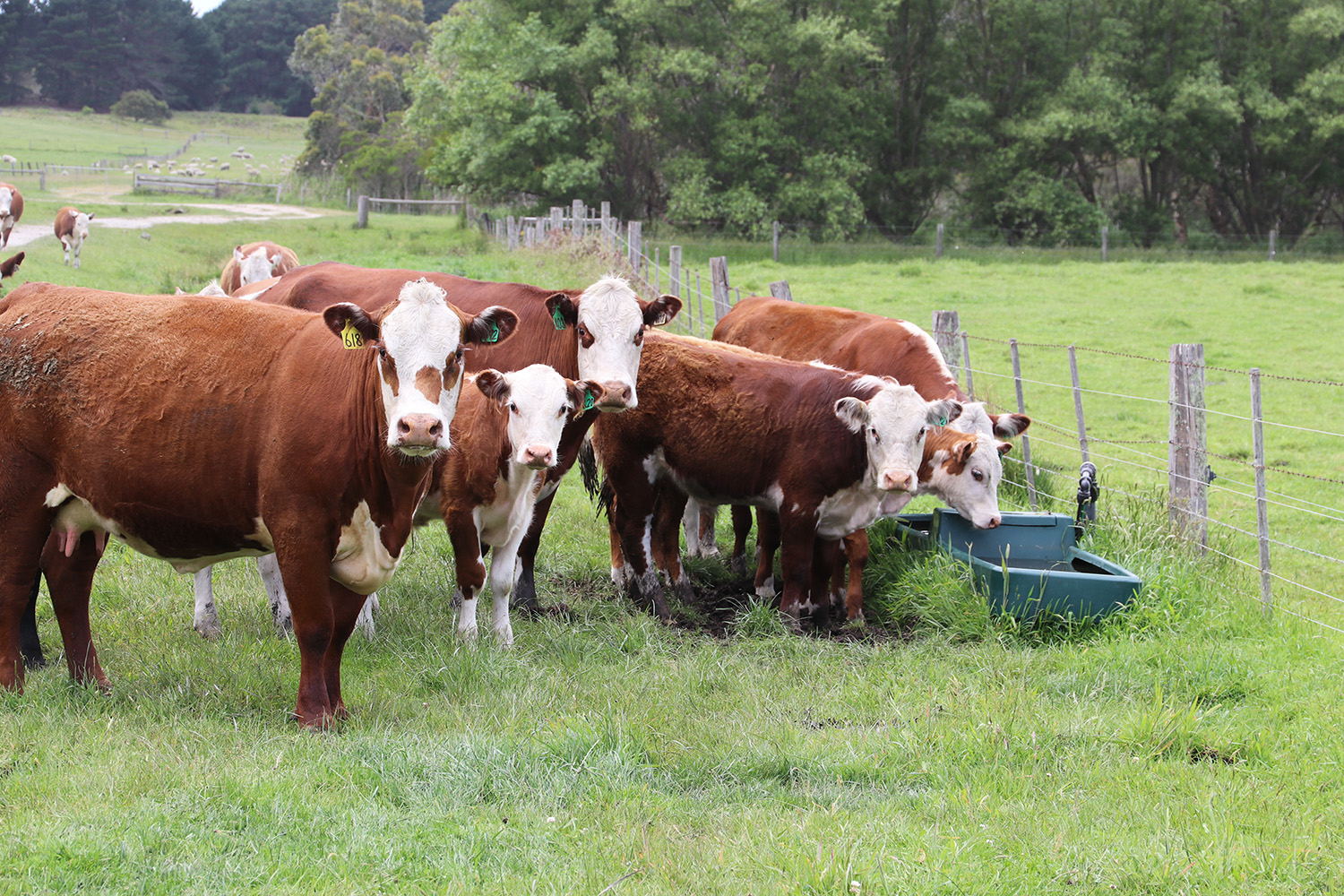
Time your grazing to match the needs of the plants in your riparian area
Heavy grazing when plants are entering their annual growth phase can damage pastures and native vegetation because it restricts the plants’ ability to set seed, produce roots and send out new growth.
On the other hand, lightly grazing herbaceous weeds shortly before native plants are due to germinate can boost regeneration by creating gaps for emerging seedlings.
The growth cycles of individual species vary, and it is worth asking an expert to identify the types of plants that are, or should be, growing in your riparian areas. Even if a species is not visible, seed may be present and your grazing management may affect its ability to germinate and get established.
As a very general guide:
- most native species tend to flower and set seed from early spring to late summer, so avoid or restrict grazing during this period.
- most native species are dormant in late winter and early spring, making this the preferred time to graze your riparian land.
- heavy rains, floods or fire often trigger germination in indigenous plants, so you should exclude stock from your riparian land after these events.
Being able to recognise the various stages of the growth cycles of the plants in your riparian area will help you develop a responsible management strategy.
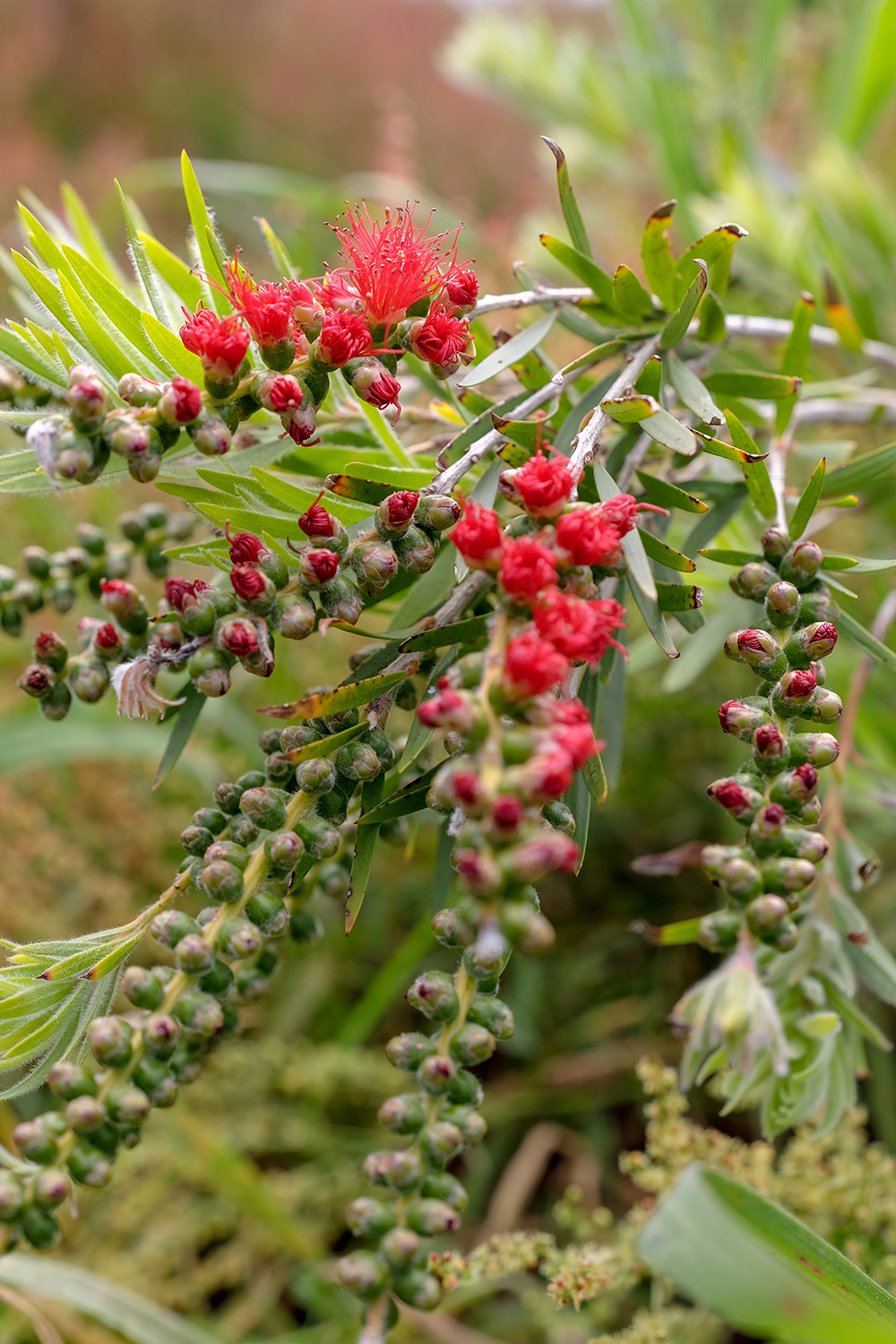
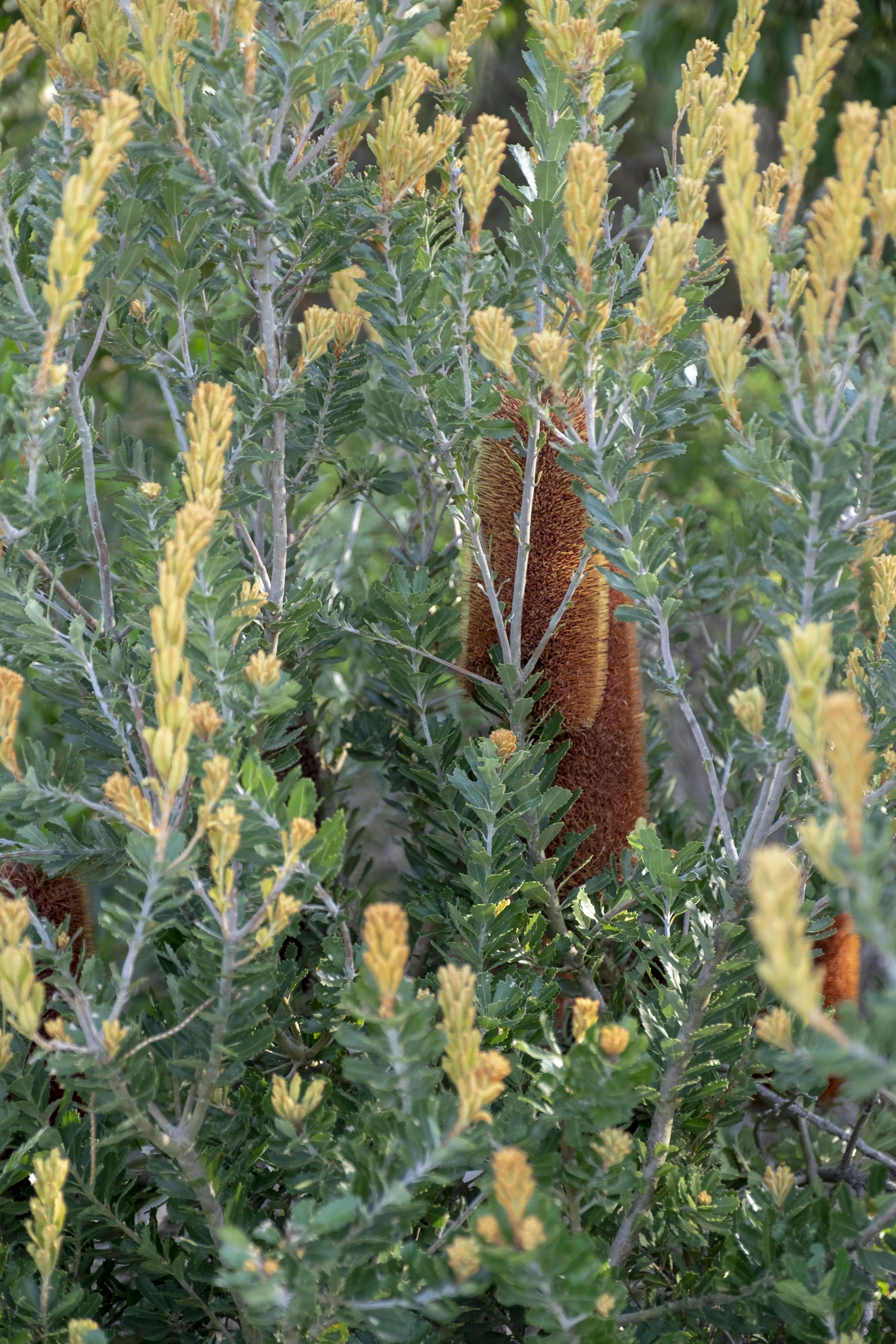
Protect native trees and shrubs
If native trees are growing in your riparian areas either through natural regeneration or replanting, you should avoid grazing until they are above browsing height.
Shrubby understorey plants, on the other hand, will always be at risk from both grazing and trampling, and you should monitor these species carefully for signs of damage.
Mature trees are at risk of rubbing, ringbarking and having their stems snapped, especially by horses and cattle. To avoid losing these valuable sources of shade and shelter, protect individual trees, or stands of trees, with portable or permanent fencing.
PUTTING IT INTO PRACTICE: MARGIE’S STORY
Grazing for weed control and to stimulate soil biology are important parts of Margie Fitzpatrick’s riparian management. Having experienced serious erosion when she first took over the Goulburn property, however, she is well-aware of the need to maintain adequate groundcover to protect her riparian land.
Her management involves careful assessment of the amount of groundcover, monitoring, and extended periods of rest after grazing.
“I aim for groundcover everywhere.”
Australind sits at the top of the Lachlan Catchment and Margie feels a keen sense of responsibility for the quality of the run-off that leaves the 1650 ha property.
Historical overgrazing had resulted in severe erosion and scalding, particularly along the many tributaries flowing into Woollogarang Creek.
Working with organisations like Rivers of Carbon, the former Lachlan Catchment Management Authority and Greening Australia, Margie has carried out several projects designed to rehabilitate her riparian land.
Two kilometres of river and stream frontage were fenced off in 2007, and in 2013, 48 acres of severely eroded and degraded land were revegetated via direct seeding, using seed from a mix of trees and shrubs endemic to the area.
Margie also addressed small areas of headcut erosion (less than 1m deep) with flumes made of interlocking rocks laid on top of a layer of geotextile. A cheap alternative to concrete, the flumes involve filling in the headcut and rebuilding the bank at a gradient that allows water to flow away from, instead of under, the top of the bank.
Other restorative projects include spreading out rolls of hay and other bio-matter to ’slow the flow’ of water across degraded areas. This has trapped water and sediment and encouraged grasses to regenerate.
The fencing, off-stream watering system and revegetation have been “gamechangers” for Margie. In particular, she has been able to create smaller paddocks across the property that have allowed her to fine tune her grazing management, and says “I have noticed more perennials and diversity coming back into the landscape.”
Margie does not graze her wetlands, areas that are suffering erosion, or where plants have not yet become established.
Prior to grazing, she prepares a fodder budget based on the amount of pasture on the banks. This determines both the size of the mob, and the maximum amount of time they will be allowed to graze.
“I aim for groundcover everywhere,” she says. “The key is the number of animals relative to the size of the grazing area and the time spent in that paddock.”
Margie prefers to graze a larger number of animals for a short period of time, and always factors in a long rest period afterwards. “It is important that adequate recovery time is adhered to before the animals are allowed to come back in to graze.”
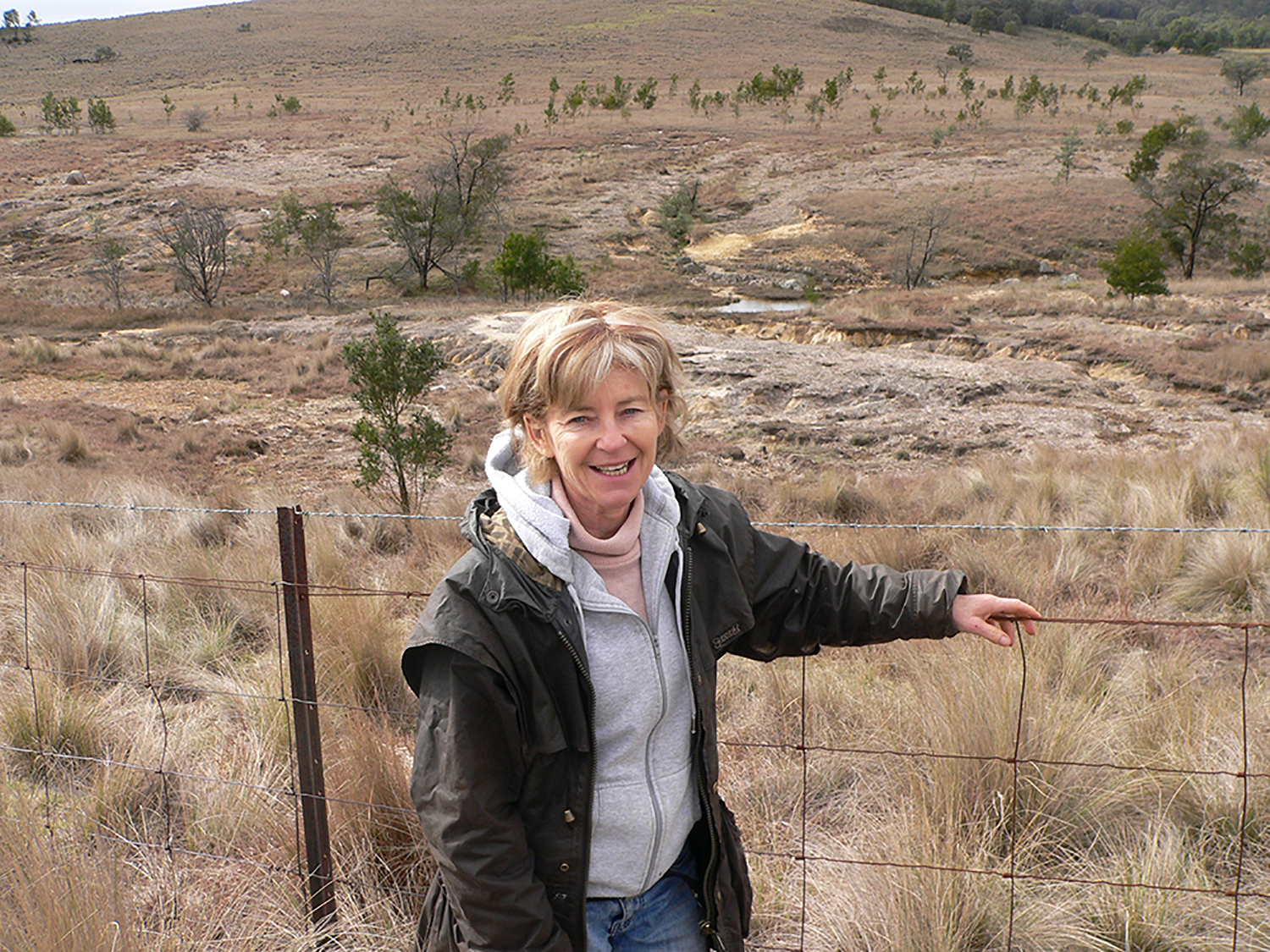
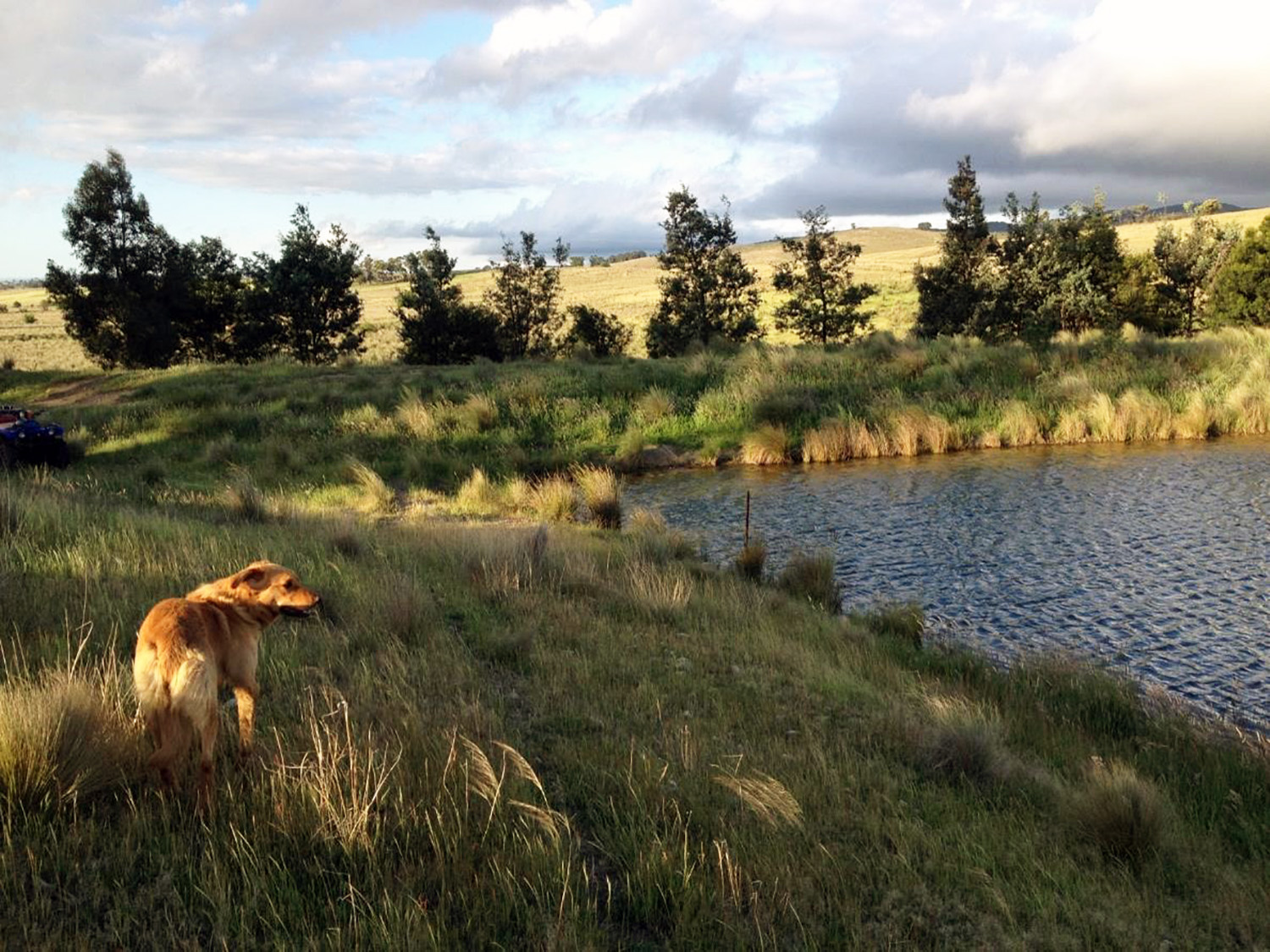

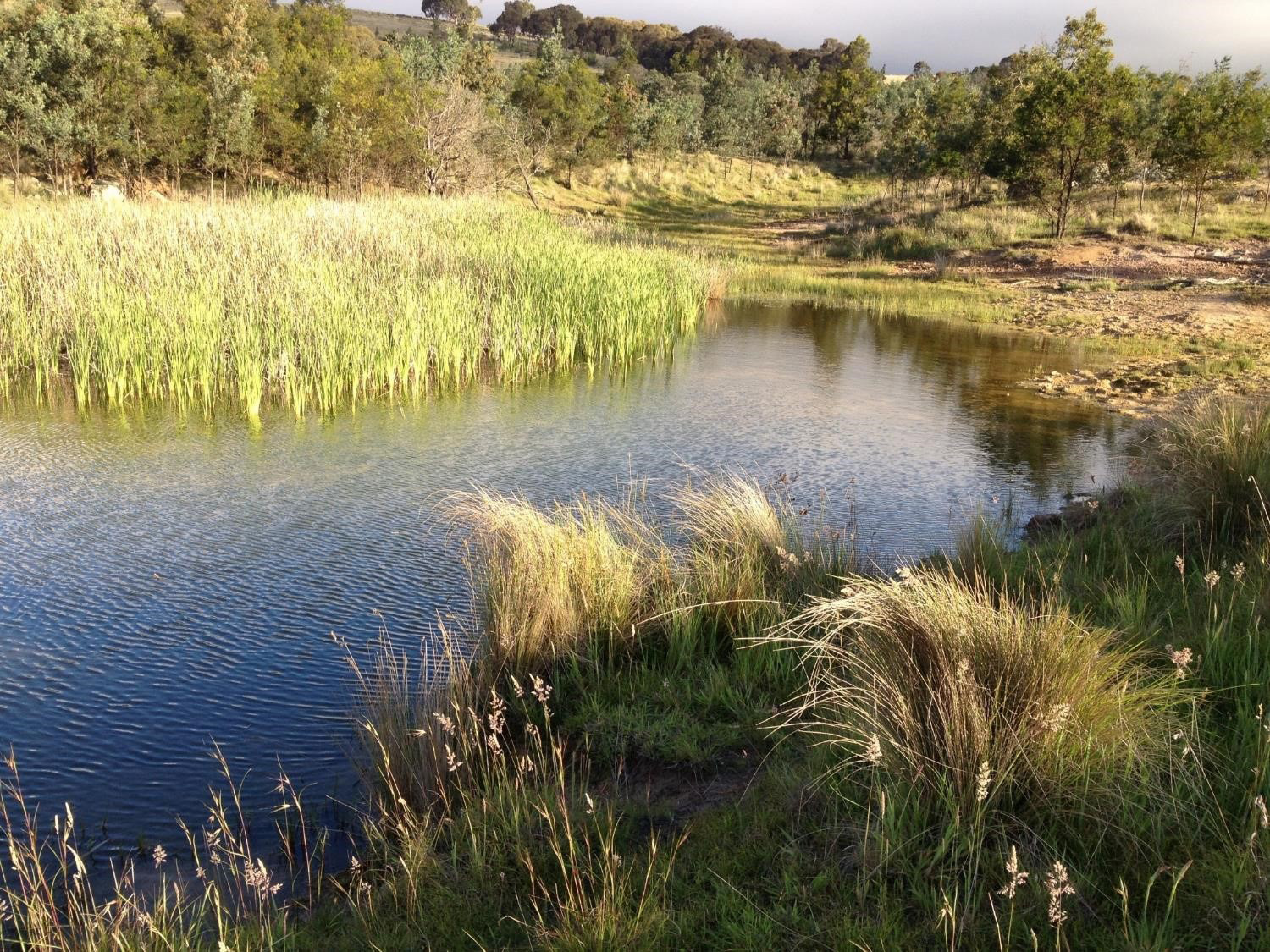
Download a PDF copy of Section 8: Responsible Grazing.
Fill in the form below and we’ll send you a digital copy.
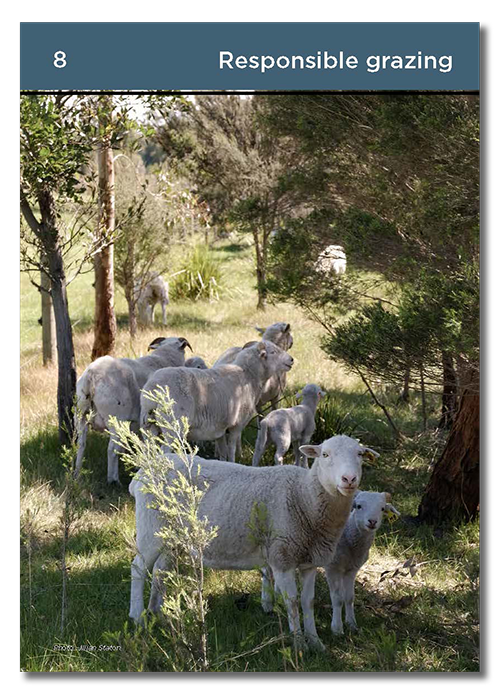
We have incentives available for managing stock around waterways on your farm…
Through our Rivers of Carbon program we can help you manage stock around waterways. We will visit your property and work with you to develop a plan for your waterway that may involve fencing, off-stream water, small-scale erosion works, and re-vegetation.
Once we have an agreement in place on what we want to achieve together, we generally cover at least half of the costs involved in implementing the agreement. Click the button below to learn more about our program:
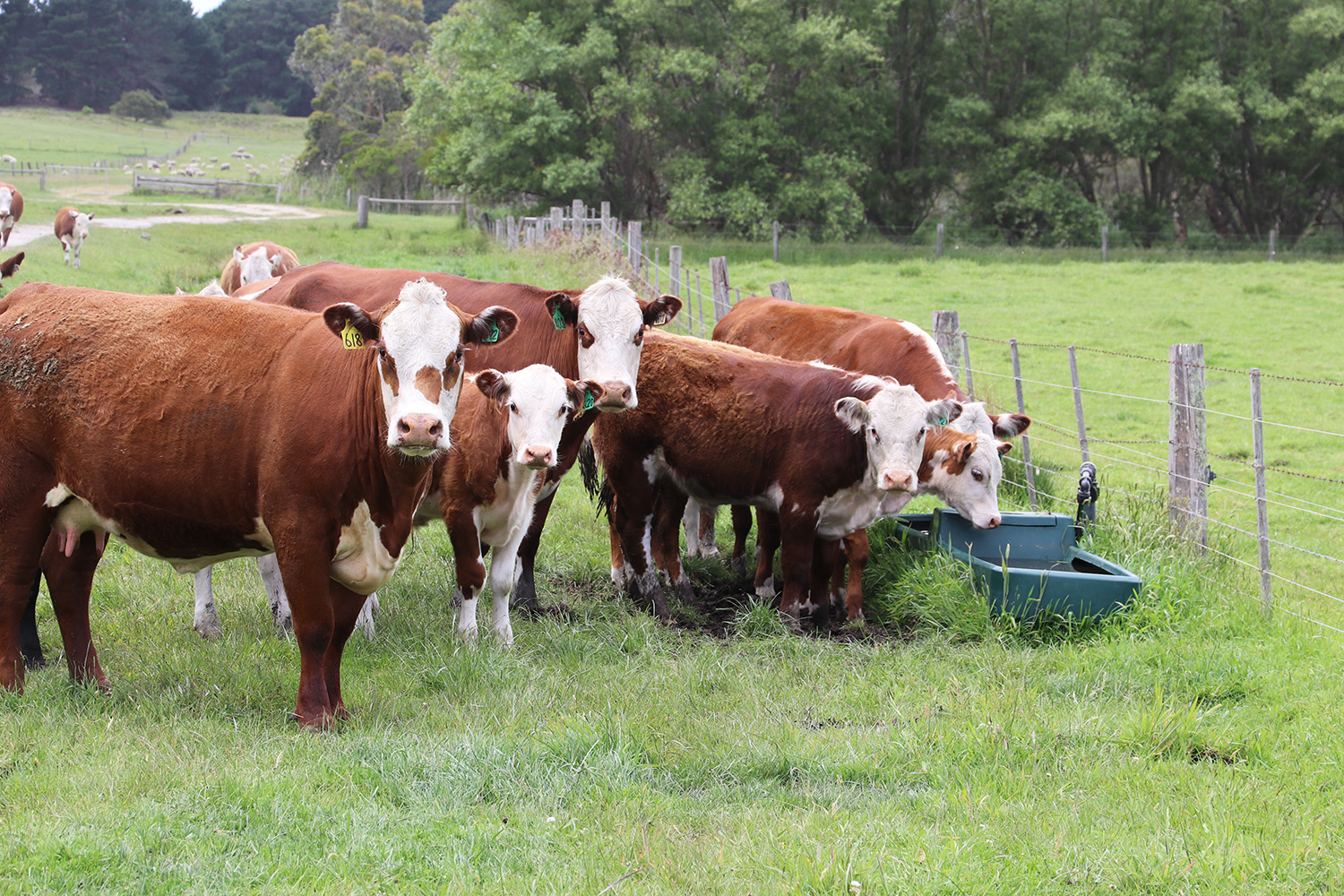
This website is a collaborative project between:



